IRAQ AND KURDISTAN ILLEGAL STAMPS
Information and Reference of illegal stamps for Iraq and Kurdistan according to U.P.U. Circulars 2004 No. 71 and 2013 No. 61
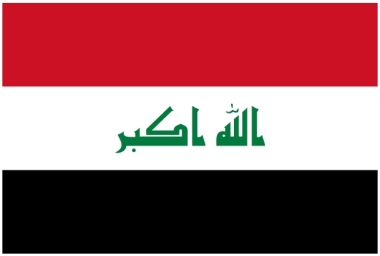
On March 1, 2004 the postal administration for Iraq by request to K.J.S. McKeown (Director of Markets) posted to the Universal Postal Union a
circular warning of the discovery of a number of illegal overprints on older Irag stamps that are on the market. The circular is
number 71. You can view it in the linked file below:
UPU Circular Number 71
On May 6, 2013 the postal administration for Iraq by request to K.J.S. McKeown (Director of Markets Development) posted to the Universal Postal Union a
circular warning of the discovery of a large number of illegal stamps inscribed Kurdistan that are on the market. The circular is
number 61. You can view it in the linked file below:
UPU Circular Number 61
First a little history on what Kurdistan is.
Kurdistan is a roughly defined geo-cultural territory in Western Asia wherein the Kurds form a prominent majority population and the Kurdish culture,
languages, and national identity have historically been based. Geographically, Kurdistan roughly encompasses the northwestern Zagros and the eastern
Taurus mountain ranges.
Kurdistan generally comprises the following four regions: southeastern Turkey (Northern Kurdistan), northern Iraq (Southern Kurdistan), northwestern Iran
(Eastern Kurdistan), and northern Syria (Western Kurdistan). Some definitions also include parts of southern Transcaucasia. Certain Kurdish nationalist
organizations seek to create an independent nation state consisting of some or all of these areas with a Kurdish majority, while others campaign for greater
autonomy within the existing national boundaries.
The UPU and the majority of nations within the UPU do not recognize Kurdistan post as a legitimate postal administration. All mail sent to the region goes
through Iraq post. As circular 61 states, all stamps inscribed Kurdistan may not be used for postal prepayment purposes on postal items within the meaning
of article 8 of the Convention. They may be "ok" being used within the area, but are not valid for international mailing.
Here is a quote from someone who lived in the region called Kurdistan in 2016.
Having lived in Kurdistan for 2 years, the Kurdish Postal System is valid within Kurdistan only but i strongly believe that aside of some expats with
philatelic background and some local dealers/collectors no one uses it. Some covers exist where Kurdish stamps were used for international mail and i assume
they are slipped thru since the postal communication with the UPU world lies in the Hand of Iraq (Baghdad).
Out of my experience there is no normal Business mail, nor newspaper delivery. Kurdish people do not write private letters and all correspondence to / within
governmental institutions are taken care by hand delivery.
As per UPU regulations, International mail going outside of Kurdistan must be franked with Iraqi stamps as Kurdish stamps are not valid outside of Kurdistan.
See UPU Circular 06/2013. Nevertheless, there exists correspondence, even parcels, franked with Kurdish stamps that were delivered internationally thru Baghdad.
I believe the Kurdish Postal System is more a political issue to maintains some sort of autonomy, prepare for independence and as such the costs are not relevant.
Nevertheless, since most of Kurdish citizens work in public sector anyway (if you can call that working at all), they are just kept (some sort of) occupied.
When visiting i.e. Ainkawa Post Office, i found a staff of 5-6, all busy doing nothing. The same as for Nawroz Post Office in Erbil..., even larger number of
staff, yet very friendly.
According to Linn's Stamp News an updated list of "Stamp Issuing Entities Of The World" made in 2020, it shows Kurdistan as "inactive" and only acknowledges the
1923 stamps made by rebels forces in Northern Iraq.
In my research on the problem I found specific sellers on eBay and Delcampe selling numerous covers with Kurdistan stamps on them. Pretty much all of
the international covers have provisional handstamps on them. Provisional handstamps, overprints and stamps are used by the postal administrations that are authorized
to send international mail for territories, regions and so forth that are not authorized, whether they make their own stamps or not.
I found most to be "locally" sent with a major portion being sent to the WHO organization within the region. The majority being on the same type of cover, that
being a brown plain envelope. Mostly sent by the same person(s) with hardly any addressing and no return addressing. These covers mostly being offered in
present times (2022) for a fractional cost of 99c and not even selling at that! All of this appears to simply be a massive attempt to legitimize the stamps. The
bottom line is that the region has always been under Iraq's control and as circular 61 shows, nobody within the region is authorized by Iraq to make stamps, local or not.
Recently in 2021 the Regional Government within Kurdistan proposed making a stamp commemorating the pope's visit. It shows a map claiming to be of Kurdistan. Here is
an image of the response from Turkey.
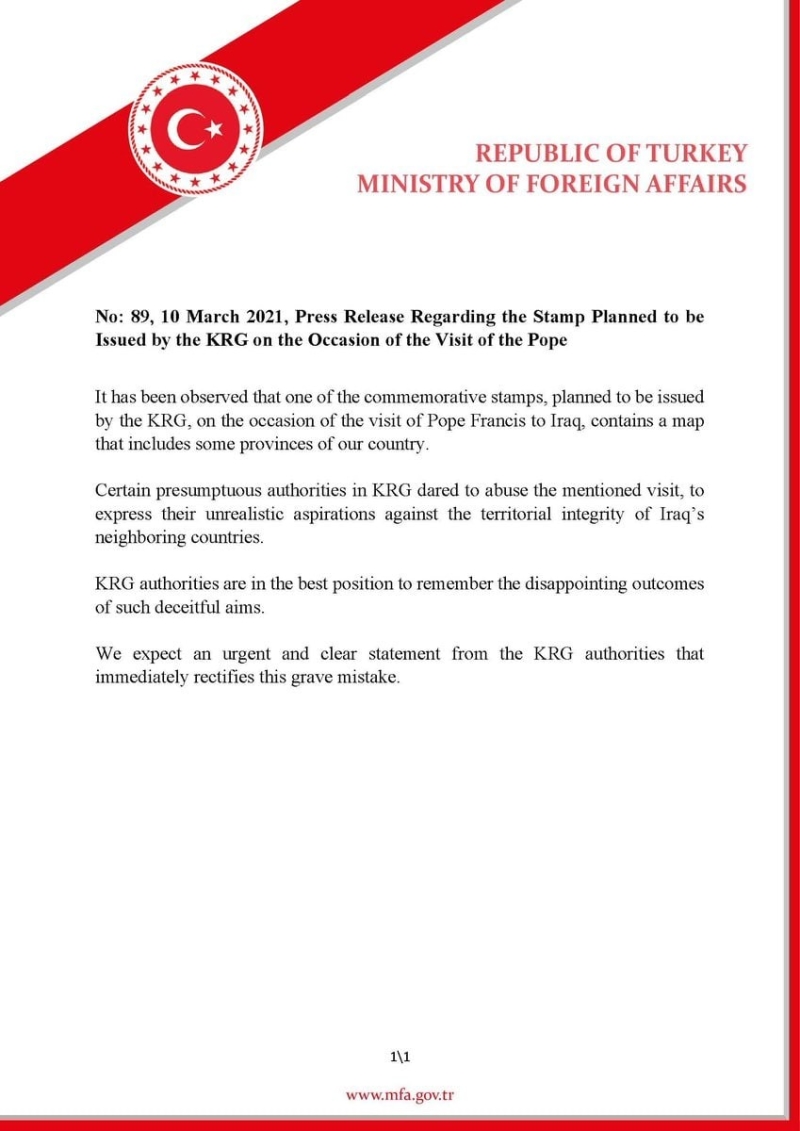
In March of 2021 the KRG stated it was a proposed stamp design that was not accepted.
As we can see, nothing was released and to this day in July of 2022 nothing else has been released either.
Another point that needs to be brought up is that most of the illegal stamps in the name of Kurdistan are inscribed "POSTAGE". This is deceptive in nature and used
only to make illegal stamps look like legitimate postage stamps.
Because the stamps can be used in the local region, I will not watermark them as ILLEGAL. Any usage of them for international mailing without Iraq stamps or provisional
handstamps from authorized postal system, the use is illegal.
Here we go!
1993
Kurdistan "stamps" are not listed in any of the major stamp catalogs. The first stamps were produced in 1993 and were illegal overprints on Iraq postal tax stamps.
The 1977 Dome of the Rock issue, Scott number RA23, to be exact. The overprints were crude and are faint. All the 1993 Kurdistan stamps were supposedy "issued" on June 4.
Kurdistan 1993 Illegal Overprints on Iraq 1977 Dome of the Rock Tax Stamps
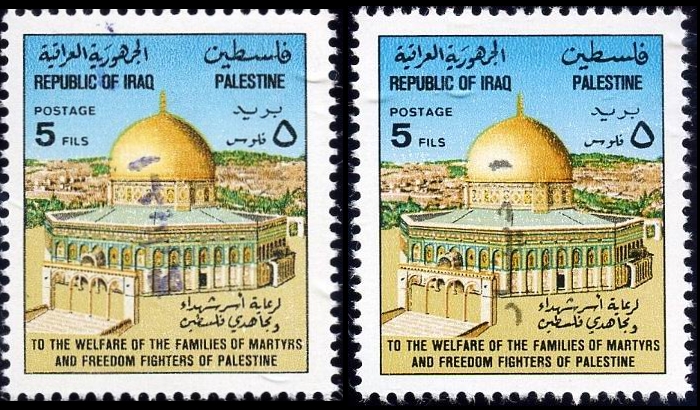
Kurdistan 1993 Illegal Overprints on Iraq 1989 Tourism Stamps
These were overprinted so lightly and crudely you cannot even tell what it is!
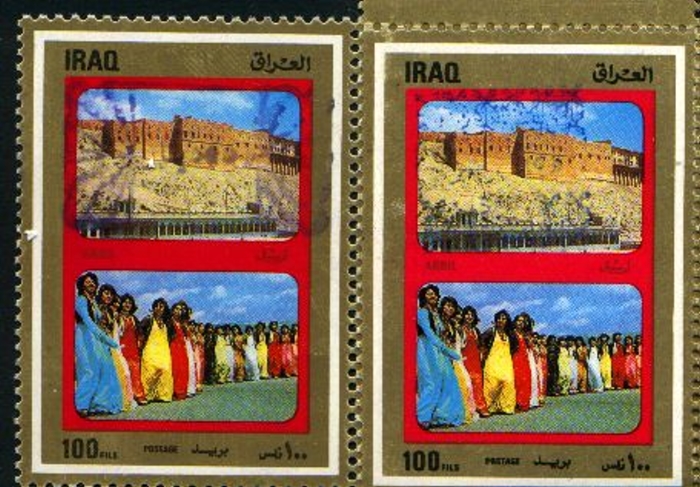
Kurdistan 1993 National Assembly of Kurdistan Building Stamps
It is stated that the 1ID gray was decided not to be issued because of the unsuitable color. The 2ID was changed later to resemble the unissued 1ID correcting the year date
on the bottom. The 1ID mauve and the 3ID green and yellow were never corrected.
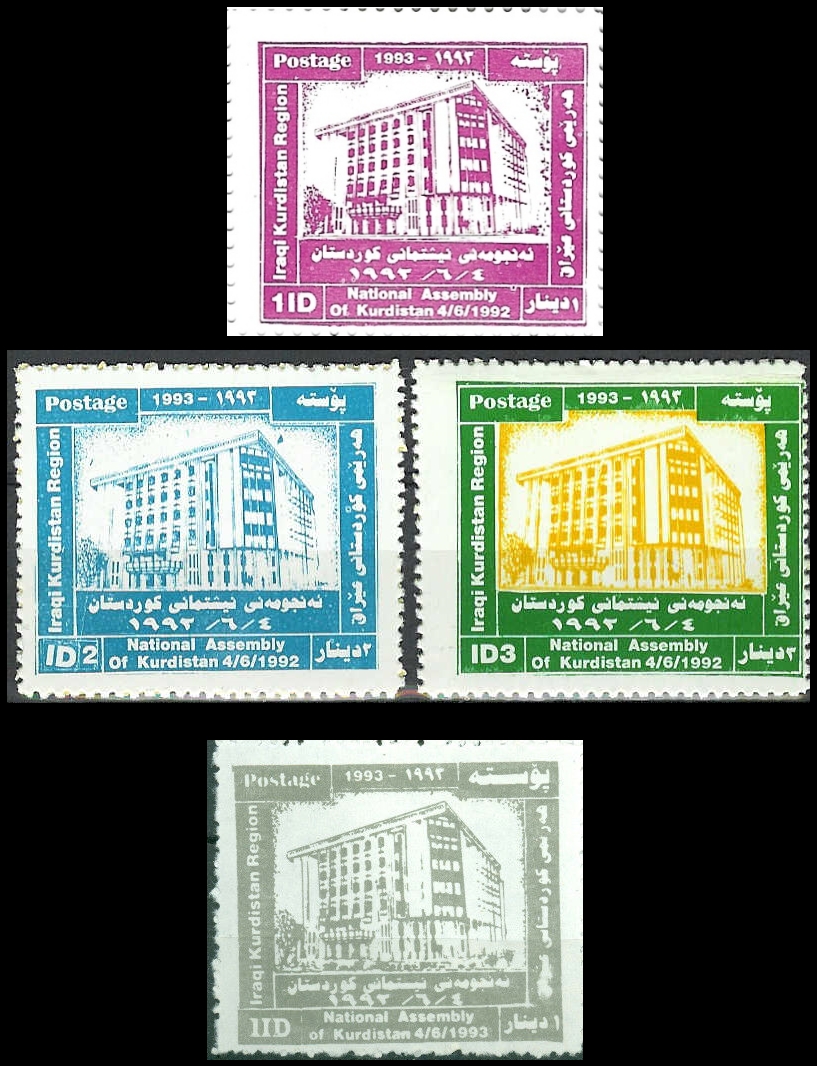
1997
After four years they produce more stamps.
Kurdistan 1997 Serok Barzani Stamps
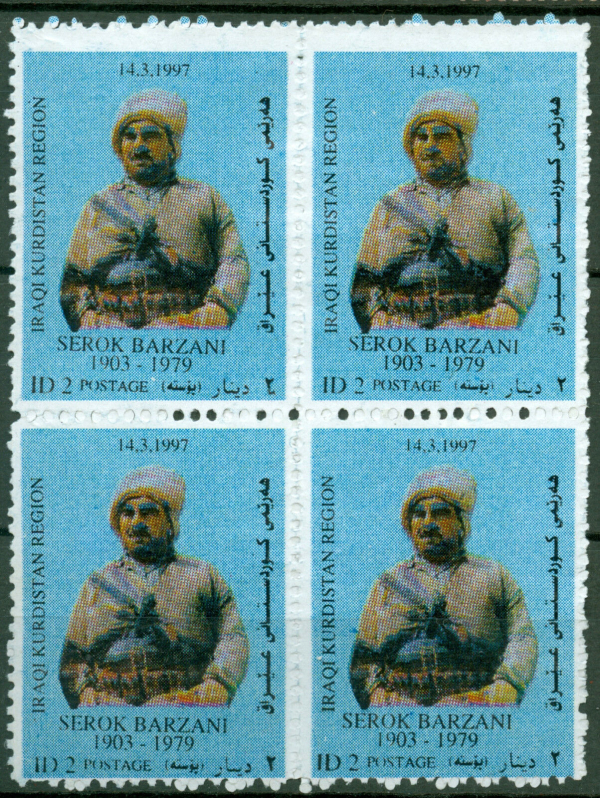
Kurdistan 1997 Hawler (Erbil) Capital of Kurdistan Stamps
The yellow 5ID is stated to be very rare which is doubtful.
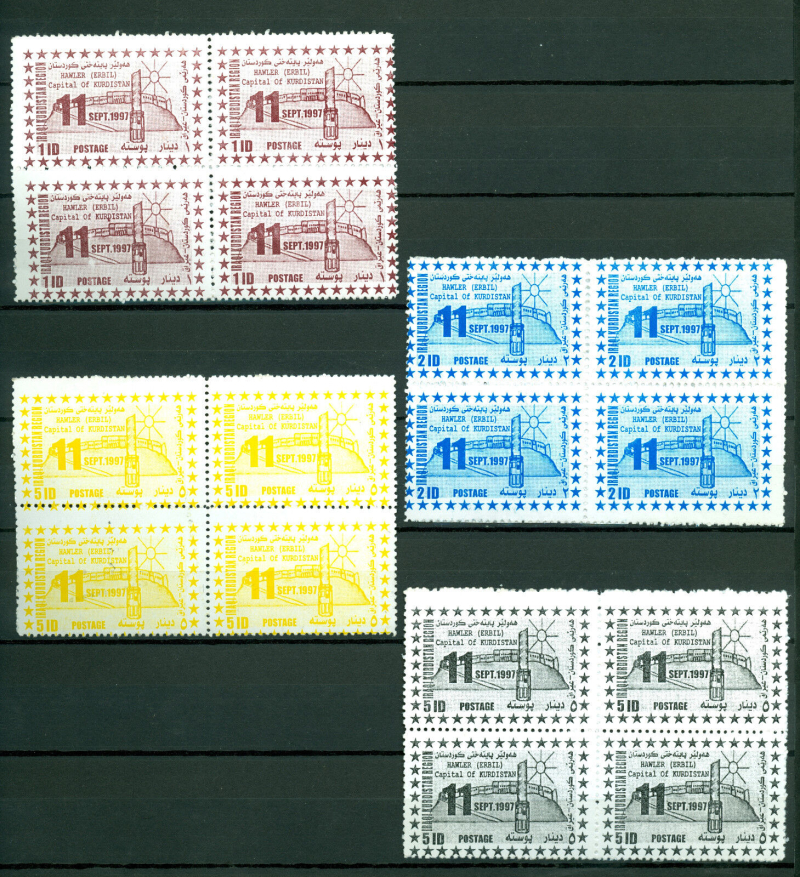
1998
In 1998 they produce more stamps and an outside illegal stamp producer located in the United Kingdom briefly appears. All of the "issues" coming out of Kurdistan
stated to be issued in April.
Kurdistan 1998 Mugdad Badrakhan Stamp
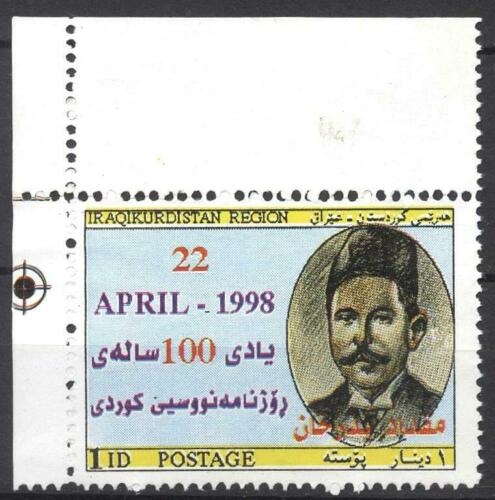
Kurdistan 1998 Kurdish Nature Stamp Set
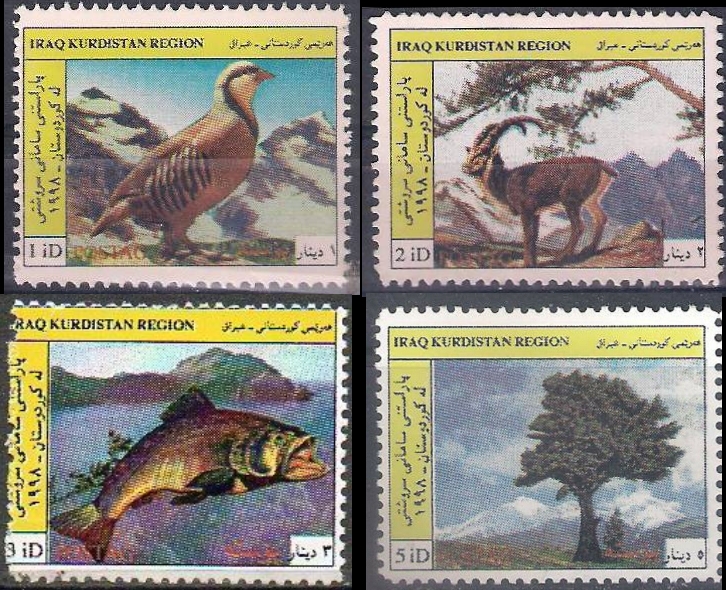
Kurdistan 1998 Kurdish Settlements and Cities Stamp Set
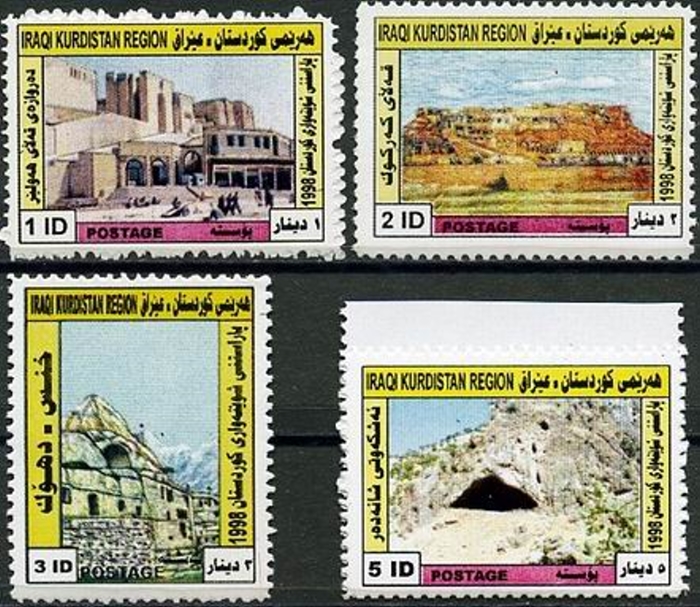
Kurdistan 1998 Kurdish Historic Sites Stamp Set
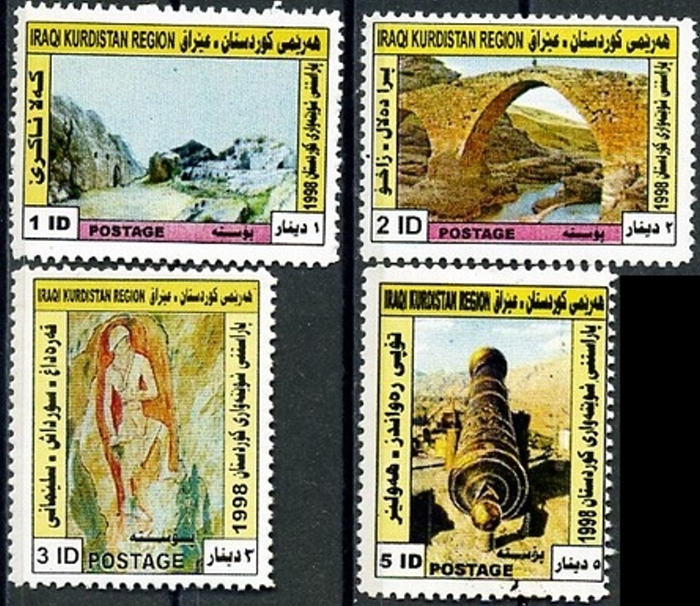
In 1998 the British counterfeit illegal stamp producer tries his hand.
Kurdistan 1998 WWF Animals Illegal Stamp Souvenir Sheet of 8
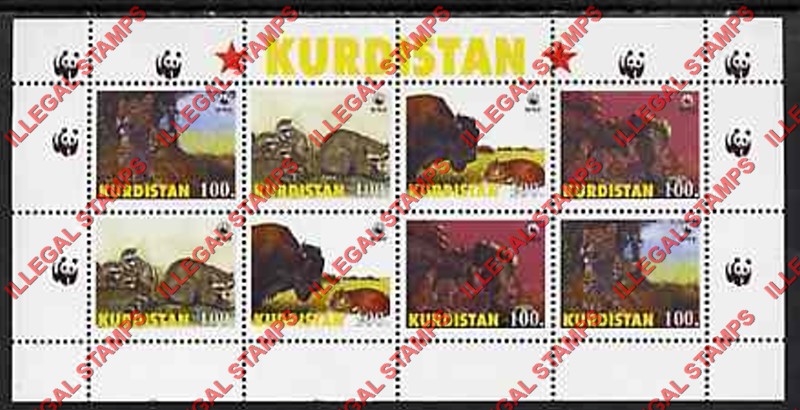
1999
In 1999 they become bolder and produce larger sets of stamps.
Kurdistan 1999 Spring Festival (Nawrooz) Stamps
Said to be "issued" March 21.
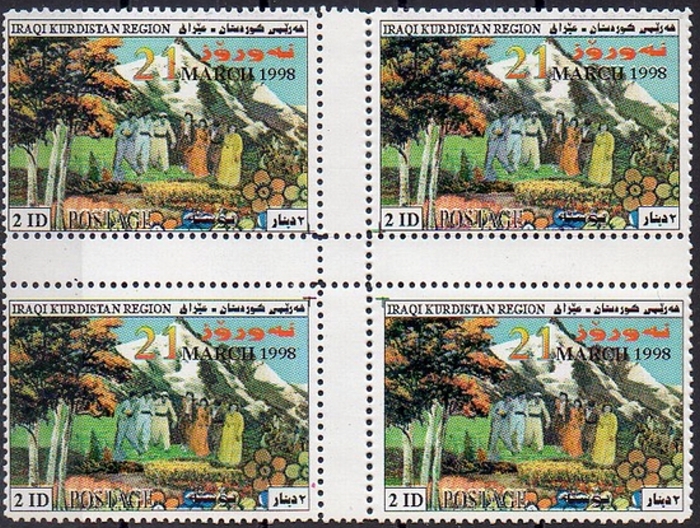
Kurdistan 1999 Second Computer and Communications Conference Stamps
Said to be "issued" April 21. The se-tenant stamp is a different version from the 1998 Historic Sites set.
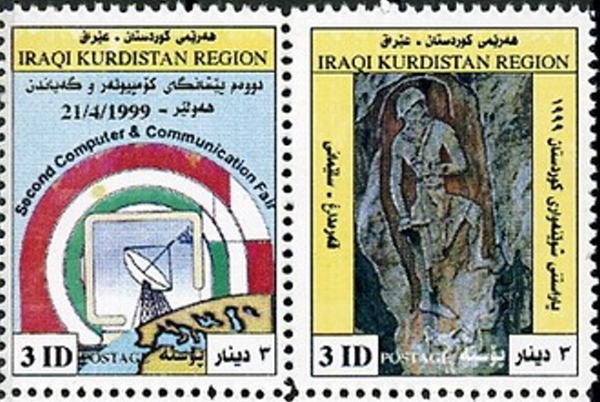
Kurdistan 1999 Kurdish National Costumes Stamp Set
No month of issue stated. Said to be two different sets.
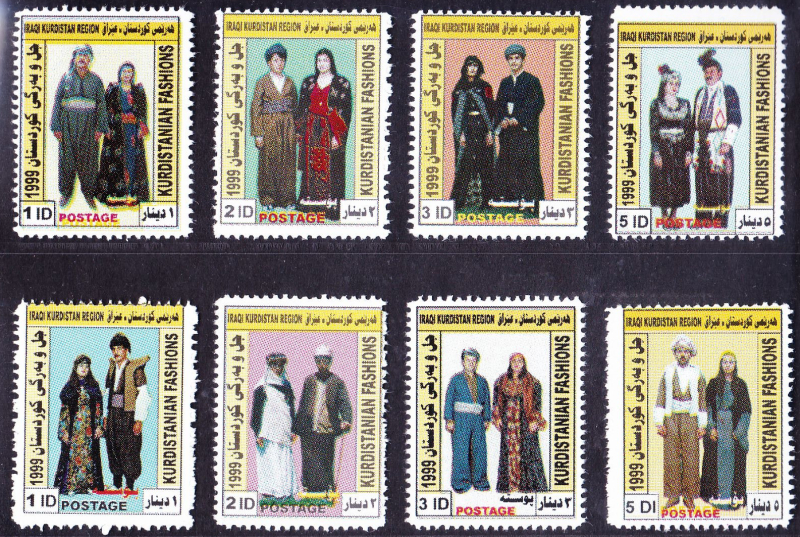
Kurdistan 1999 Tourism and Scenes Stamp Set
No month of issue stated.
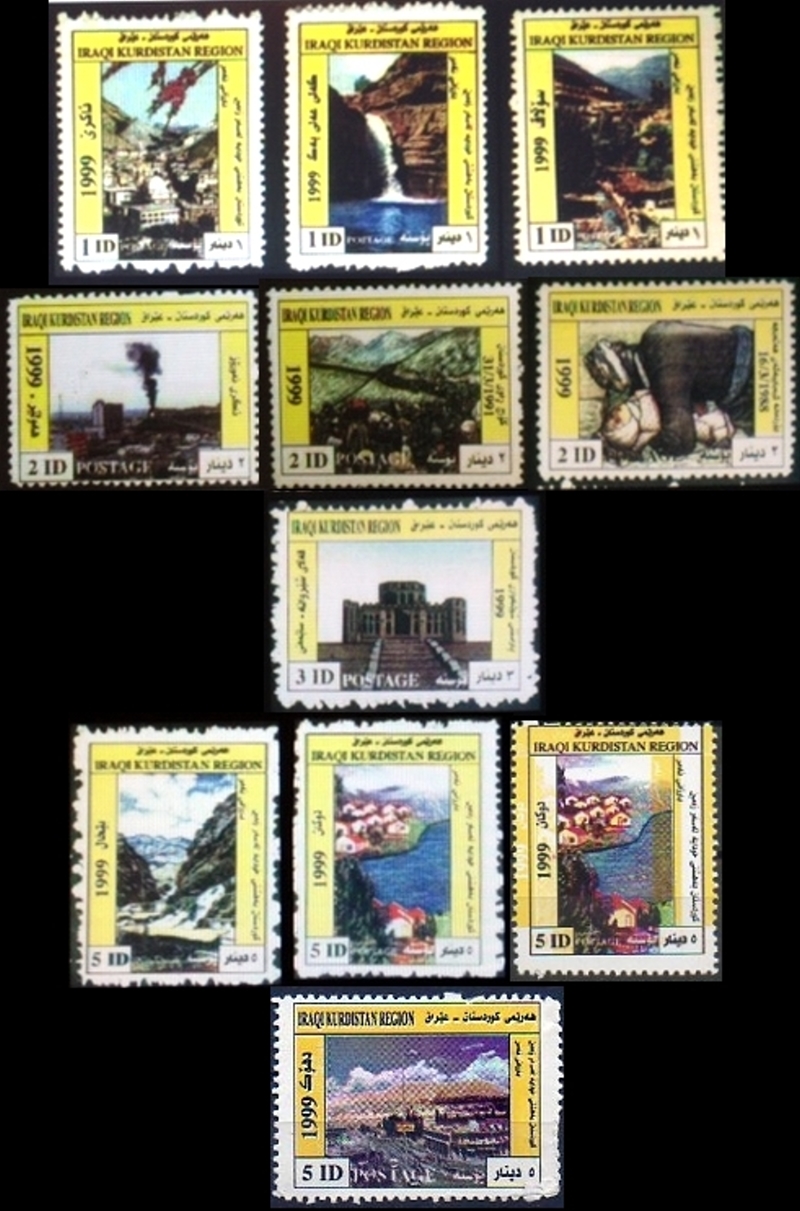
Kurdistan 1999 Kurdish TV Satellite Illegal Stamp Set
Stated to be issued November 15.
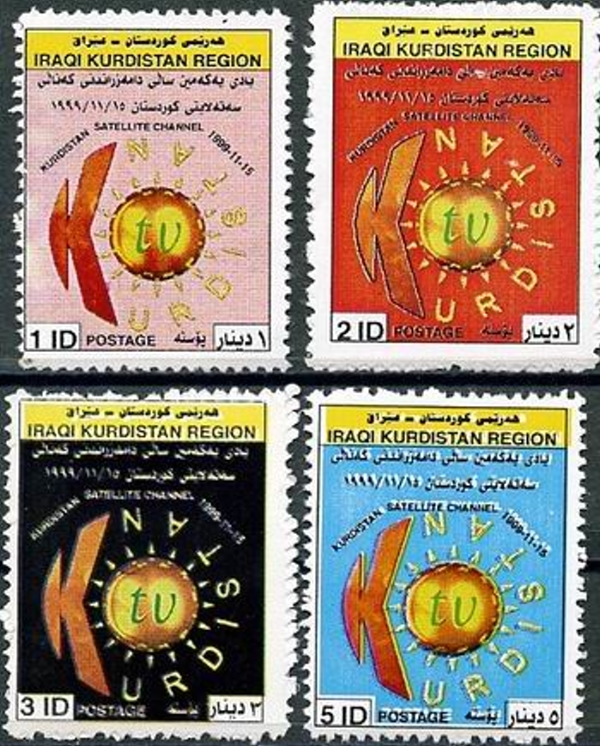
Kurdistan 1999 Flowers Stamp Set
No month of issue stated. Several have the word POSTAGE spelled POTAGE. Sellers try to call them "errors" but the whole printing was done as such.
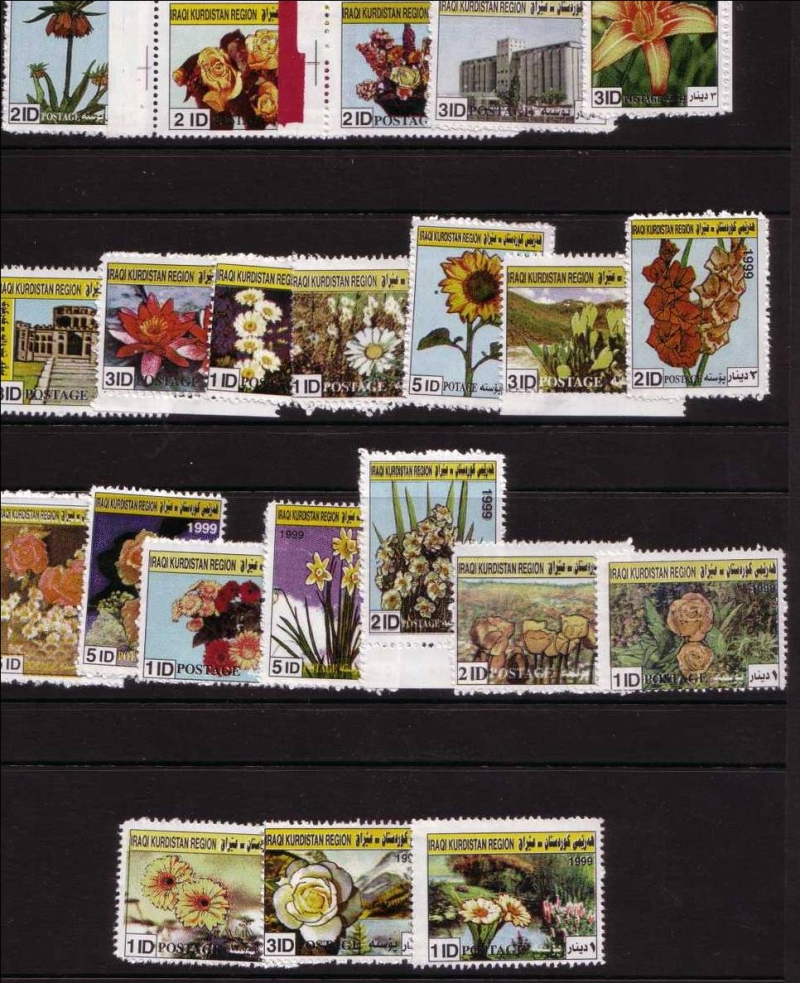
Kurdistan 1999 Sheik Mahmood Barzani Stamp
No month of issue stated.

The production of stamps in the name of Kurdistan continues in 2000.
View Next Page here!
References taken from:
U.P.U. Circular No. 61 and Circular No. 71
Major Stamp Catalogs
Internet Research
All Content Copyright © 2022 Golowe's Collector Stamps, All Rights Reserved
Visit Illegal Stamps Introduction
Real collector stamps are fun!UPDATED LAST ON: 16-Jul-2022 11:48 AM

